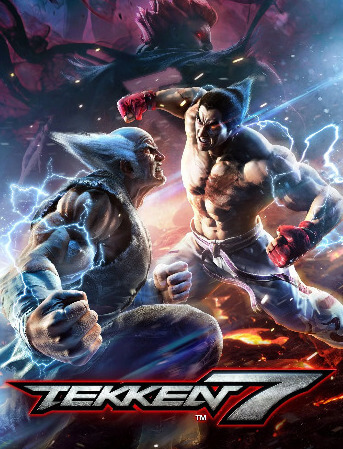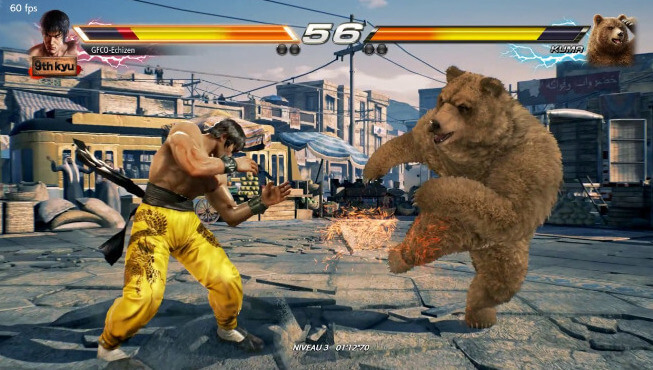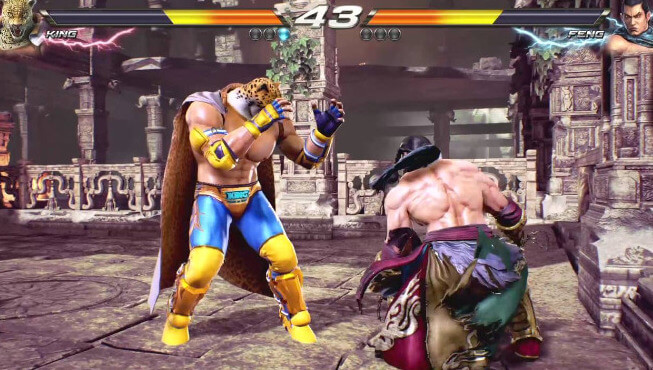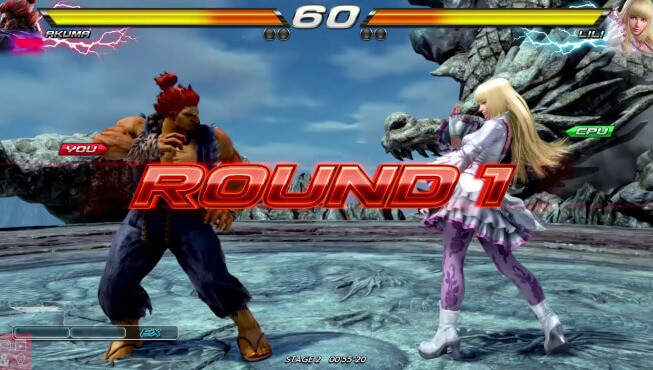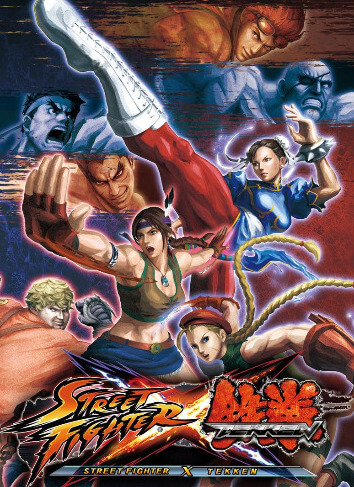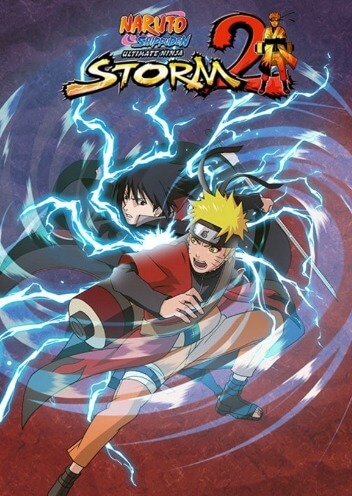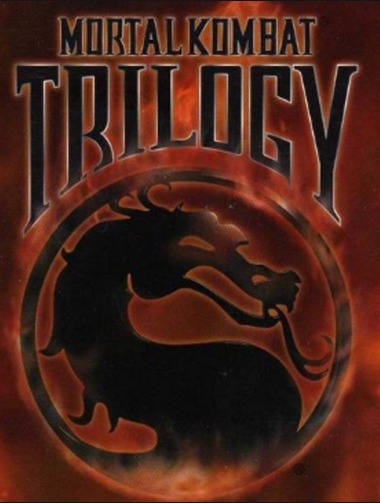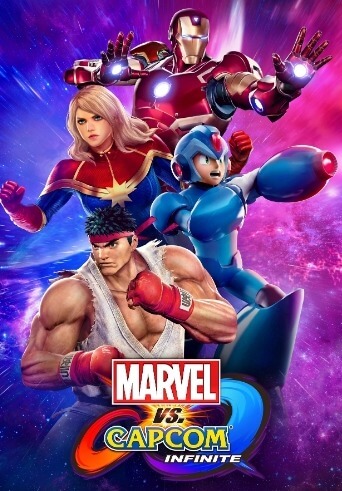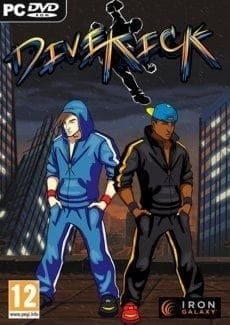Tekken 7 (鉄拳7) is a fighting game developed and published by Bandai Namco Entertainment. It is the seventh installment in the Tekken series, and was the first to make use of the Unreal Engine. Tekken 7 had a limited arcade release in March 2015. An updated arcade version, Tekken 7: Fated Retribution, was released in July 2016, and features expanded content including new stages, costumes, items and characters. The same version was released for Microsoft Windows, PlayStation 4 and Xbox One in June 2017.
Set shortly after the events of Tekken 6, the plot focuses on the events leading up to the final battle between martial artist Heihachi Mishima and his son, Kazuya. Tekken 7 introduces several new elements to the fighting system such as Rage Arts and the Power Crush mechanic, making the game more beginner friendly than previous iterations in the series. Tekken 7 was a critical and commercial success, selling over four million copies by March 2019.
Gameplay
Tekken 7 focuses on 1v1 battles. Two mechanisms are introduced in the game. The first, Rage Art, allows the player to execute critical attacks that deal roughly 30% damage depending on the character once their health bar is critically low. The second, Power Crush, lets the player continue their attacks even while being hit by the enemy, although they would still receive the damage dealt by the enemy's attacks. The mechanic also works for absorbing high and mid attacks. The bound system, which staggers a character to increase opportunity for additional hits, is replaced by Screw Attack, which makes the enemy spin sideways when they are hit airborne, allowing the player to inflict additional hits after they reach the ground. Unlike bound, however, Screw Attack cannot be used to do wall combos. With a new display system, the game's multiplayer allows players to choose which side of the screen to play on. Movement has undergone some changes and is similar to the movement mechanics found in Tekken Revolution, most notably when characters walk backwards.
The arcade version features the traditional stage-based playthrough, in which the player progresses by beating five different opponents one by one, ending with a fixed penultimate and final stage. Matches may be interrupted if another player joins the game. Online mode is available for both local and international play. Character customization is featured, allowing the player to modify characters' appearances. For the first time in the arcade series, the game features a practice mode, which allows players to train moves against an opponent for a limited amount of time, as well as an option to collect in-game rewards, mainly customization items, through "Treasure Box" by winning enough matches.
Fated Retribution features several gameplay changes to the game. The new "Rage Drive" allows the player to empower certain attacks by sacrificing their Rage Mode. Rage Art is also adjusted so that the amount of damage dealt to the enemy is inversely proportional to the player's current health bar. The update introduces meter-type characters, who utilize jump-in attacks and special cancels, and use an EX/Super meter as a limiter for some special attacks in place of Rage Drive. However, they have no 10-hit combo moves. This type is reserved for three characters: Eliza, and the guest characters Akuma and Geese Howard. Another guest character, Noctis Lucis Caelum, has Tekken-type gameplay but possesses jump-in moves. The update also added Wall Bound, which initially only applied to guest character Geese Howard. The Season 2 update eventually added the mechanic for every character.
Further game modes were released as post-release downloadable content (DLC). They include Tekken Bowl, a bowling minigame which debuted in Tekken Tag Tournament.
Plot
After the events of Tekken 6, though Azazel was destroyed by Jin Kazama, the war between the Mishima Zaibatsu and G Corporation continues to ravage the world. The game's story is told from the perspective of a reporter whose wife and son are killed in the crossfire, leading him to begin writing an exposé on the Mishima Zaibatsu and G Corporation. Nina Williams leads the Zaibatsu in Jin's absence, attempting to locate him, but Heihachi Mishima takes advantage of the vacuum of power and forces Nina to work for him, regaining control of the Zaibatsu. Heihachi makes a deal with Claudio Serafino, head of the powerful Sirius Marksmen organization, to help him expose his son, G Corporation head Kazuya Mishima, believing public opinion will shift in the Zaibatsu's favor if Kazuya's Devil Gene is revealed. Claudio senses a powerful force in the Far East that is unconnected to either Jin or Kazuya.
The reporter researches the Mishima family history, learning that Heihachi's coup against his father Jinpachi and the death of his wife Kazumi both occurred in the same year he threw his son Kazuya into a ravine. Meanwhile, the United Nations intelligence group has located Jin, but he evades capture long enough to be rescued by his half-uncle Lars Alexandersson. Lars takes Jin to recuperate at Violet Systems, where Jin's adoptive uncle Lee Chaolan has repaired Alisa Bosconovitch following her seemingly permanent shutdown in the previous game. The Zaibatsu attacks the compound, but the trio is able to secure Jin. The reporter, having rendezvoused with Lee and Lars, tries to kill Jin in his sleep, but is discouraged by Lars, who says Jin is the only person capable of stopping the conflict. According to Lee, the reason behind Heihachi fathering Lars was to confirm that he did not possess the Devil Gene, proving it originated from the Hachijos, Kazumi's family.
